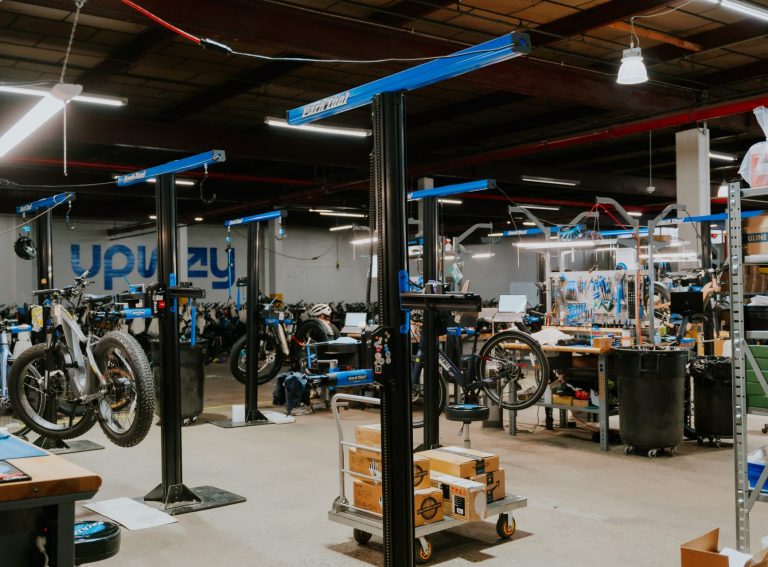Published in July 2024 – a report titled ‘Leveraging the EU battery production to achieve net-zero with light electric vehicles’ – took more than a year to develop from initial conception to publication.
That process included a workshop with a wide range of battery experts from companies including Honda, Siemens, Gouach, Bib Batteries and Swobbee.
Written as a joint-venture between EIT Urban Mobility and sister organisation EIT InnoEnergy, it seeks to understand how future battery technology can accelerate the adoption of LEVs across the EU.
“The LEV sector cannot be ignored given the growth it has experienced, but not looking at batteries too – one of the most important components – would be irresponsible,” Yoann Le Petit, Mobility and Innovation Specialist at EIT Urban Mobility, tells Zag Daily in an interview.
“Last year, twice as many LEVs were sold in Europe as electric cars. The data shows that in conjunction with public transport, micromobility devices offer a compelling option for consumers and will play a key role in the sustainable urban mobility transition.”
However, in order for the adoption of micromobility devices to keep growing, the sector needs to be supported by a reliable supply chain of safe and sustainable batteries.
“Currently 95% of LEV batteries are sourced from Asia,” says Le Petit.
“Meanwhile, EV battery production in Europe is projected to outstrip the demand from the electric car and van sector by 2030. This mismatch shows that battery manufacturers should complement their focus on powering electric cars by developing cells that fit LEVs.”
Learning to compete
Given that the vast majority of LEV batteries used in Europe are currently being imported, manufacturers need to be able to compete better on cost, safety and performance.
The current battery market is very competitive and therefore, it is important to support EU battery production in a way that enables manufacturers to deliver against these KPIs.
“It is clear from the research that serious investment into R&D and upskilling the workforce is required,” explains Le Petit.
“Access to funding is a make or break factor that will determine whether 10 years down the road we will be able to cater for the European LEV market with European batteries.”
One of the industry figures that worked with EIT Urban Mobility to create the study was Julius Müller, strategy lead at Circu Li-ion.
Based in Luxembourg, Circu Li-ion specialises in recycling and upcycling batteries used in the LEV and EV space.
“If we want to build a European battery manufacturing value chain, we need to be able to compete on cost,” Müller tells Zag Daily.
“The batteries from Asia are far cheaper than what is made in Europe. Manufacturers need to reuse components, not only the cells, but other parts of the battery to get the cost down.”
However, Müller argues that for a lot of companies, reusing certain components is not yet economically viable.
“To solve this issue we need to move towards a circular and standardised battery design,” he continues.
“This requires firms working in partnership throughout the entire value chain, where designers are talking to operators about what impact their design will have on circularity.”
According to Müller, roughly 60% of the cells that Circu Li-ion test from a pack that has been declared dead could still be used for second life applications, but the cost involved prevents manufacturers from trying to recycle parts.
“If you design with circularity in mind, you open up that second life use case and significantly lower costs in Europe, reducing dependency on imported batteries in the process,” he concludes.
The impact of battery passports
From 2027, it will become mandatory in the EU for manufacturers to develop battery passports, which contain information about the origins of raw materials, components, recycled content and carbon footprint.
“The battery passport would be an incredibly welcome change for the industry,” Müller says.
“It can give us a much better understanding of the battery’s history and health, as well as making it easier to take apart efficiently.”
However, Müller believes that there has been a lack of detail around the implementation of the battery passports, which means that plenty of work is still to be done.
“There is a lot of uncertainty around certain parts of the battery passports,” he explains.
“How can we ensure that the information flows accurately and what happens when a battery is recycled? These are questions that need to be answered.”
Le Petit agrees: “During the workshops for the study there was enthusiasm for the battery passports, but manufacturers want to know how it will work in practice. It is definitely an opportunity, but more clarity is needed.”
Opportunities for change
While the report highlighted some of the shortcomings of the current European battery manufacturing sector, it also identified a number of opportunities.
For example, the study showed that there is a real opportunity to shift focus from producing larger batteries to cylindrical cells, as this is the mode used by the majority of LEVs. This type of cell is also used by appliances such as power tools so is versatile in its application.
“One of the key messages of the paper is to highlight the huge opportunity out there for EU battery production,” Le Petit argues.
“We want the EU and its member states to take notice of the huge demand for batteries optimised for the micromobility sector. While designing plans to incentivise battery production in Europe, policy makers cannot forget about LEVs because they are needed for the sustainable mobility transition and the sector is growing rapidly.”
Le Petit also pointed to the fact that LEV batteries are smaller and require the use of fewer finite resources. According to data collected for the study, the development of LEV batteries is projected to use up to 30 times less critical materials than the production of larger EV batteries.
“The wider adoption of LEVs and the shift in battery production from larger to smaller electric devices can have a huge impact,” says Le Petit.
“If we are able to make cities more liveable with a greater mix of transport and mobility options, we can reduce car dependency and help shift battery production trends. It is an opportunity that cannot be ignored.”





